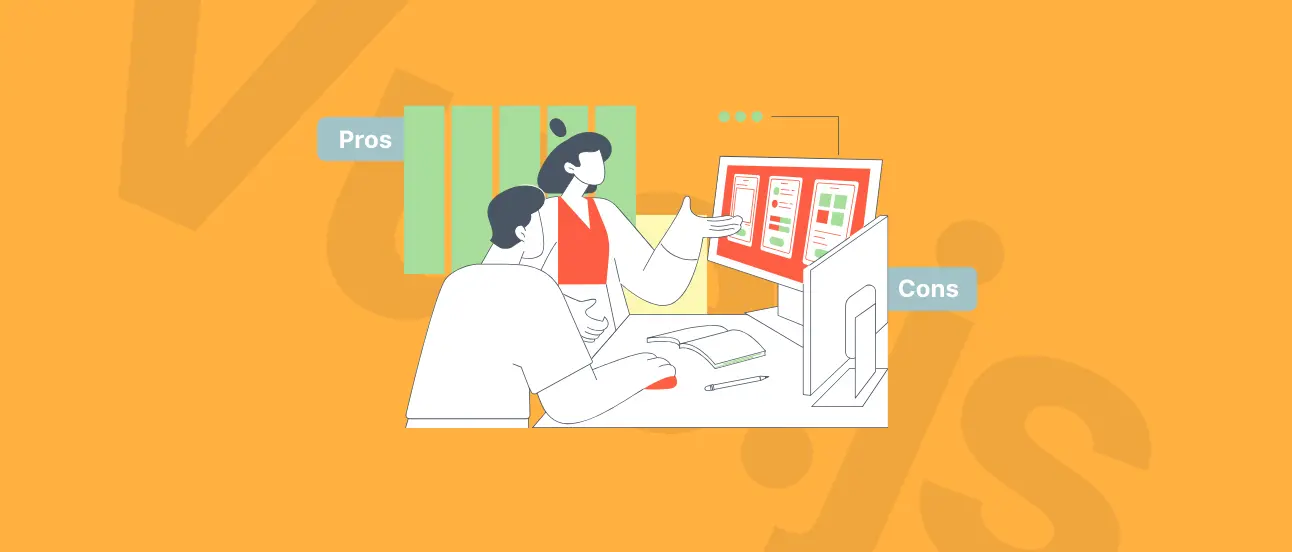Svelte in 2026: Why It’s (Still) a Big Deal - Svelte 5 Features, SvelteKit, Pros & Cons
Svelte 5 and SvelteKit offer a faster, simpler approach to building modern frontends. Here is what’s new, how the framework works today, where it fits in real projects, and when alternatives might be a better choice.

Svelte in short:
Svelte compiles to minimal JavaScript, avoiding the virtual DOM and keeping bundles small and fast.
Svelte 5 introduces runes and deep reactivity, which makes the state simpler and more predictable.
SvelteKit supports SSR, SSG, and hybrid rendering, running on Node, serverless, edge, or static hosting.
It works well in headless setups, connecting cleanly to CMS APIs and modern decoupled architectures.
A strong alternative to React/Next.js, especially for teams that value performance and clear DX.
Not always the best fit: React/Vue-heavy ecosystems, hiring constraints, or projects needing instant-resume or islands architecture may prefer other tools.
What is Svelte
Svelte is a JavaScript framework that works differently from traditional UI libraries like React or Vue. Instead of running a virtual DOM in the browser, Svelte shifts most of the work to the build step. Components are compiled into small, framework-free JavaScript that updates the DOM with minimal overhead.
This approach keeps bundle sizes low and avoids the runtime cost that virtual-DOM frameworks carry by design. In practice, it leads to fast interactions, predictable performance, and simpler code.
Because Svelte handles logic, markup, and styling in a single file, developers work with clean, readable components that map directly to how the browser behaves. The framework stays close to the platform, which is one of the reasons many teams find it easy to adopt.
Svelte glossary
Runes – Svelte 5’s new reactive primitives for state, derived values, and effects without reactive labels.
Deep reactivity – Automatic UI updates when nested array or object values change, without manual reassignment.
Snippets – Small reusable pieces of markup you can embed directly in components without creating a new file.
Adapter – SvelteKit plugin that prepares your app for a specific deployment target such as Node, serverless, edge, or static output.
Hydration vs. resumability – Hydration replays the UI on the client; resumability restores it from server-rendered state with minimal JavaScript.
Islands – Mostly static pages with isolated interactive components hydrated individually only where needed.
What’s New in Svelte 5
New rune-based reactivity model
Deep reactivity for arrays and objects
Snippets for reusable markup
Support for standard event attributes like onclick
Improved project setup with the sv CLI
Svelte 5 introduces a new reactive system built around runes → lightweight primitives that make state, derived values, and effects easier to reason about. Instead of relying on reactive labels from earlier versions, Svelte 5 uses explicit functions such as $state, $derived, and $effect. This makes updates more predictable and keeps reactivity consistent across components.
The biggest shift is deep reactivity. Arrays and objects now update the UI when their internal values change, without the manual reassignment that older versions required. For most teams, this removes a common source of confusion and reduces the amount of boilerplate needed to keep interfaces in sync.
Svelte 5 also adds snippets, a simple way to reuse markup logic without creating separate components. For smaller UI fragments, this keeps files cleaner and avoids unnecessary structure. Alongside that, event attributes like onclick are now supported, giving developers a more familiar syntax when handling user interactions.
Finally, the new sv CLI streamlines project setup. It provides templates, add-ons, and consistent tooling for SvelteKit projects, which lowers the barrier to starting new applications or experimenting with the framework.

Build modern frontends with confidence
Our team can help you choose the right setup and architecture for long-term scalability.
SvelteKit is much more than SSG
SvelteKit is the application framework that brings routing, rendering, data loading, and deployment options to the Svelte ecosystem.
While early versions were often associated with static site generation, today SvelteKit supports a full range of rendering models: SSR, SSG, hybrid approaches, and deployments to Node, serverless, edge runtimes, or fully static environments through adapters.
Because these options work well in distributed hosting environments, SvelteKit fits naturally into modern decoupled architectures.
The framework is built on Vite, which gives teams fast refresh, clear configuration, and predictable build performance. Pages, layouts, and server routes follow a simple file-based structure, so adding new views or API endpoints stays straightforward even as the project grows.
Since SvelteKit handles server and client logic in a unified way, teams can choose the right rendering method per route instead of committing to a single architecture. This flexibility makes it a strong fit for content-heavy sites, apps with dynamic data, and products that need to run reliably across different hosting environments.
See how we create Headless web solutions that empower you to grow
Learn more
Why It Is Worth to Pick Svelte
Lean runtime with no virtual DOM
Small bundles and fast UI updates
Rune-based state with fewer extra libraries
Built-in transitions and animations
Clear DX: instant feedback, single-file components, TypeScript-friendly
Strong Next.js alternative for simpler, faster apps
Consistently high performance in JS framework benchmarks
Teams choose Svelte for its lean runtime and the way it compiles components into efficient, framework-free JavaScript. Without a virtual DOM, bundles stay small and updates remain fast, even as interfaces grow.
Svelte 5 also simplifies state management. The new rune system reduces the need for third-party libraries and keeps reactivity easy to reason about. Built-in transitions and animations cover many UI needs out of the box, which helps projects avoid stacking extra dependencies early on.
Developers appreciate the workflow as well: instant feedback during development, readable single-file components, and smooth TypeScript integration. These details contribute to a clear, predictable environment that scales well in everyday work.
Svelte also fits into conversations around modern framework choices. For teams comparing options like React-based architectures, SvelteKit is often considered a strong Next.js alternative, especially when simplicity and performance matter.
In terms of performance, Svelte consistently ranks near the top of well-known JavaScript framework benchmarks. While results vary by test and use case, they highlight how efficient compiled output can be in real applications.
Where Svelte fits vs. alternatives
| Need / Scenario | Best fit | Why |
|---|---|---|
| Fast, lightweight UI with minimal runtime | Svelte | Compiled output, tiny bundles, simple reactivity |
| Large ecosystem, enterprise-scale integrations | React | Broad library support and hiring availability |
| Fine-grained reactivity with strong performance | Vue | Mature reactive system and flexible tooling |
| Content-heavy sites with minimal JS | Astro | Islands architecture keeps most pages static |
| Instant-resume at scale | Qwik | Resumability-first model for complex apps |
| Type-safe, reactive architecture + web standards | Solid / SolidStart | Signals-based reactivity and strong TS experience |
| Full-stack React alternative with clear routing | SvelteKit | SSR, SSG, API routes, edge/serverless adapters |

Make your frontend future-ready
Not sure what tech stack fits your long-term roadmap? We can help you evaluate trade-offs and choose an approach that scales without adding complexity.
When Not to Use Svelte
Heavy reliance on React- or Vue-only libraries
Teams needing large hiring pools
Content-heavy sites with minimal interactivity
Projects benefiting from islands architecture (Astro)
Apps requiring instant-resume performance (Qwik)
Preference for fine-grained reactivity + big ecosystem (Solid / SolidStart)
If your application relies heavily on niche React- or Vue-only libraries that can’t be replaced, switching to a compiler-first framework may introduce more overhead than it removes. In those cases, staying within the larger ecosystems usually makes integration work easier.
Hiring can also be a factor. Some companies prefer frameworks with broad talent pools, especially for fast-growing teams. While Svelte adoption is rising, React and Vue still dominate when it comes to available developers.
See how we deliver Vue.js solutions that empower you to grow
Learn more
Content-heavy sites with minimal interactivity sometimes benefit more from an islands-based approach. Tools like Astro keep most rendering static and hydrate only where needed, which can reduce complexity further.
And depending on the performance model you need, there are alternatives worth considering. For instant-resume capabilities at scale, Qwik remains a strong option. If you prefer fine-grained reactivity with a wide ecosystem, Solid and SolidStart offer another predictable foundation.
These cases don’t diminish Svelte’s strengths. They simply highlight where another tool may fit the architecture better.
Svelte vs React vs Vue
| Feature | Svelte | React | Vue |
|---|---|---|---|
| Rendering model | Compile-time, no virtual DOM | Virtual DOM runtime | Virtual DOM + compile-time optimizations |
| Reactivity | Runes + deep reactivity | Hooks/state library | Proxy-based reactivity system |
| Bundle/runtime weight | Smallest, no framework runtime | Largest runtime footprint | Moderate runtime footprint |
| Updates | Direct DOM updates | Reconciliation cycle | Granular reactivity + VDOM |
| Component format | Single-file with markup, logic, style | JSX | Single-file components (SFC) |
Getting Started with Svelte 5 and SvelteKit
The simplest way to begin a new project is through the sv CLI, introduced with Svelte 5. It provides an interactive setup flow and lets you choose options like TypeScript, testing tools, or Tailwind so you can start with a consistent configuration from day one.
SvelteKit is the recommended foundation for most teams, because it handles routing, rendering, server endpoints, and build output in a single toolkit. Depending on your hosting environment, you can deploy the project as a Node app, a serverless function, an edge-ready bundle, or a fully static site by selecting the appropriate adapter.
Developers coming from earlier Svelte versions will find the migration process straightforward. The official guide walks through the move to the new rune-based model, which keeps the core ideas familiar while making reactivity easier to maintain in larger applications.
Build with the Framework That Fits Your Product
If you’re exploring Svelte, comparing it with alternatives, or planning a new frontend architecture, our team can help you choose the right direction. Tell us what you want to build, and we’ll guide you through the options, outline a realistic approach, and support you from the first idea to a production-ready solution.
FAQ
Svelte Explained
Plan your next frontend the right way
Share your idea with us and we’ll prepare an estimate outlining the best approach, budget, and recommended technologies.



